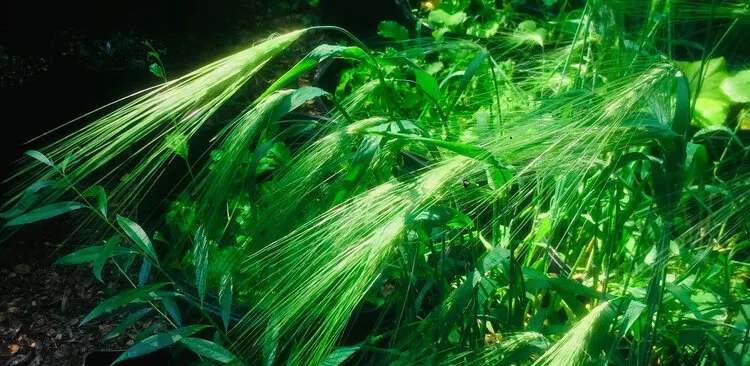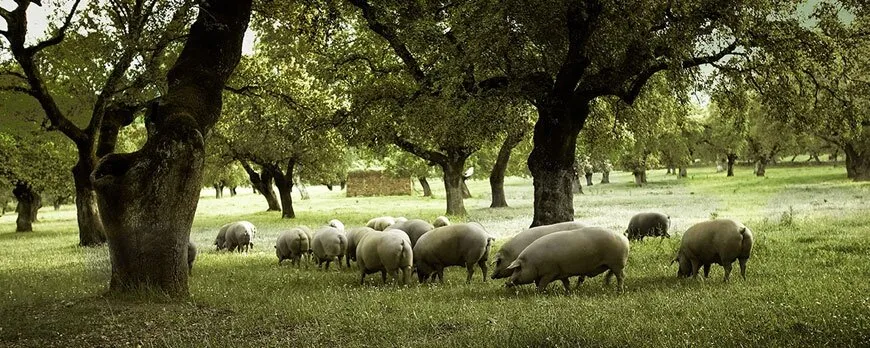I have always enjoyed looking into our distant past, by combining information I read, hopefully from reliable sources, with letting my imagination take flight, using the information I learned. One favorite topic I always love going back to is what our ancestors ate? and more interestingly, how did they go about producing this food?
So I got properly excited when I came across this article: The Lost Forest Gardens of Europe. It was published on ShelterWoodForestFarm.com, and that is also where all the accompanying pictures are from.
After reading it, I'm still sufficiently excited about not only sharing it here, but introducing it, that is talking it up a bit. It is a beautiful supplement to the idea of the great forgetting, meaning that before the agricultural revolution about 10,000 years ago hunter-gatherers had already domesticated the majority of food plants we know today (though in their separate parts of the world), which however made up only part of their diet among varieties of plants we no longer know or have.
An Ancient Food Forest
Max Paschall, the author of the article, starts telling the story after the last Ice Age, when early Europeans returned to the continent following the retreating glaciers. Their plant of life was the hazel, which they helped to take hold on the devegetated landscape across the continent. This became the basis of the ecosystem providing food for Mesolithic hunter-gatherers, along with the huge variety of species living in dynamic connection, sustaining each other. Already I was giddy to read about them, information based on the archeological record.
These were not bands of starving cavemen constantly on the precipice of death, but rich and resilient societies that had a much more diverse diet than most present-day Europeans. Researchers found that a young girl who died 5,700 years ago in southern Denmark ate duck and hazelnuts - a far richer (and tastier) diet than most kindergarteners in Western countries have today.
Using management techniques such as coppicing, hunting, and control burning, they encouraged the system to reach higher levels of productivity, resilience, and diversity, ultimately benefiting all members of this ecosystem. Grains were no strangers to this mix, but they did not dominate the diet or the landscape, like they would after the arrival of the Neolithic.
Changing Climate, Changing Farming Styles
Even after the Younger Dryas, a millennium of cooler temperatures that forced people into eating more and more grass seeds, the adoption of cereal grains was a slow and gradual process. The practice of sowing maslins or mashlum, that is a mix of dozens of grains, legumes, and other plants, continued up into relatively recent times.

Another factor, the relatively simple tools at their disposal, made these early farmers take a slow-and-steady approach, often hybridizing farming styles. In this way they blended the more recent grain farming into their traditional food forests, coming up with even more diverse and ingenious ways of production. One such example is the dehesa system from the Iberian peninsula, which are oak savannas where pigs, cork, honey, mushrooms, and wild game are only a few examples of food grown.

From Hedgerows and Grapevines on Trees to More Monoculture
As the article progresses, it provides more recent examples of how ancient cultures of Europe used nature to grow an amazing diversity of food crops. It mentions the Etruscans and how they produced superior wine, by growing the grapevines on trees. It talks about the Coltura Promiscua, essentially complex policultural systems, aimed primarily, but not exclusively at food production. "On the side" it also provided humans with lumber, firewood, material for basketry, animal fodder, and a number of other resources. Some of these production styles have remained in use up to the present, such as the hedgerow, so ubiquitous, even in today's British landscape.

The Most Radical Change
Towards the end, the article sheds light on how the biggest, most radical change in food production occurred in the last century with mechanized agriculture, and most importantly vast monocultural areas, permitting nothing more but one type of crop. However, unlike other articles leaving the reader in a state of desperation regarding their present, and ultimately their future, this beautiful piece turns optimistic when it mentions how intrepid planters in the past have started out from scratch numerous times in history.
They are an example of what we might lose if we forget too much, but also of what we can create again. Our present crises of climate change, extreme inequality, imperialism run amok, and endemic violence eerily mirror the downfalls of previous cultures that relied too heavily on a handful of finicky crops and an expansionist ethos. But this time of chaos can also be an opportunity, a chance to emulate the older cultures that replaced them: those who planted trees in the ruins of empire, who remade the Commons on abandoned plantations, and quietly continued to tend their small forest garden as their ancestors had before them. We may have inherited the most destructive systems of extraction and exploitation ever seen, but we have also inherited the seeds for a better way to live: a way that our oldest ancestors knew and cherished.